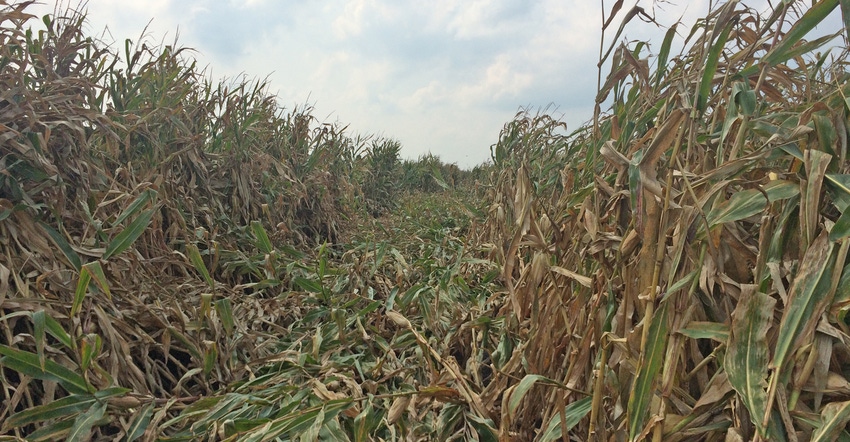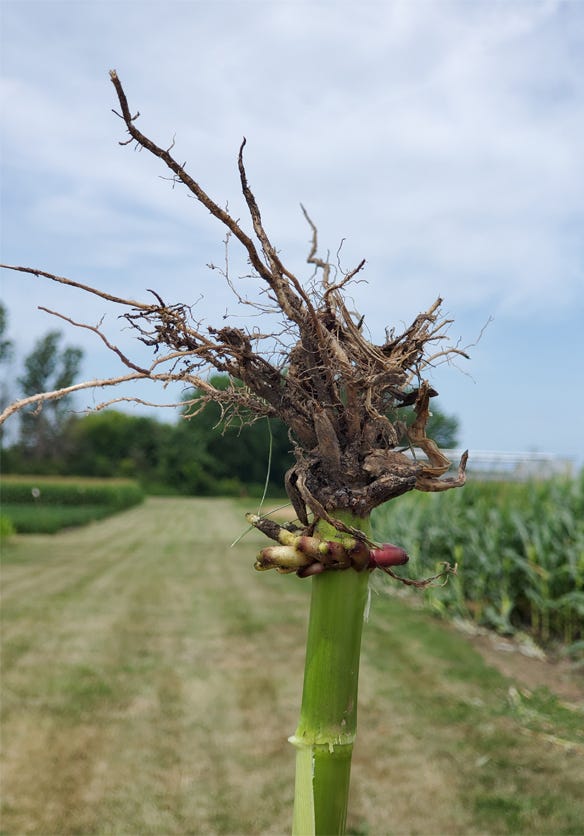December 11, 2020

Corn rootworm continues to be a major pest in the U.S. and is becoming a larger pest management challenge each year in Iowa. Reports from Iowa State University Extension field agronomists in 2020 indicate an increasing number of Bt trait failures across Iowa.
Bt traits for corn rootworm management were introduced in 2003 and were rapidly adopted by Iowa farmers. However, by 2015, field-evolved resistance of western corn rootworms to all four Bt traits had developed. There are two main species of corn rootworm of concern in Iowa — western corn rootworm and northern corn rootworm.
A survey conducted during the winter of 2019-20 by ISU Extension field agronomists and campus faculty was used to identify Iowa corn farmers’ insect of biggest concern and extent of concern with Bt trait resistance. A total of 4,411 responses from farmers were collected, and 27.5% (1,053) reported northern corn rootworm and 22.4% (858) reported western corn rootworm was the biggest insect issue they faced in corn production.
What’s happening in your fields?
However, in the same survey, only 12% (550) of the respondents reported they are experiencing Bt trait failure for rootworms, 63% (2,801) said they are not experiencing trait failure, and 24% (1,079) said they don’t know if they are experiencing trait failure. This survey data seems to imply that awareness of Bt trait failures is not very high compared to what is happening in the field.

Research conducted by Dr. Aaron Gassmann’s laboratory at ISU reports western corn rootworm resistance to all four traits has expanded geographically, as well as the magnitude of resistance has increased over time. This research also concludes that most cornfields in Iowa now have some level of resistance to the Cry3 Bt traits (Cry3Bb1, mCry3a and eCry3.1Ab) that target corn rootworms. There is also confirmed resistance to the fourth trait, Cry34/35Ab1.
It should be noted there is no confirmed evidence of northern corn rootworm resistance to the four Bt traits in Iowa, but in 2019, entomologists in North Dakota confirmed northern corn rootworm resistance to Cry3Bb1 and Cry34/35Ab1 traits.
Management for 2021
Looking at corn production for 2021, here are five main management strategies that you should be using:
1. Practice crop rotation. Rotate between corn and soybeans, or corn and another crop. Rotation to soybeans once every four to six years in continuous corn will be highly beneficial for rootworm management.
2. Use pyramided hybrids. A pyramided hybrid is one in which there are two or more Bt traits that attack the corn rootworms.
3. Rotate Bt traits. Be aware that using the same pyramided traits will likely increase chance of developing resistance over time. Use the Handy Bt Trait Table to evaluate which traits are present.
4. Use soil insecticide. Use a soil insecticide when planting non-rootworm Bt corn. However, recognize the soil insecticide only protects a small area of the root mass, and you may still experience root feeding.
5. Manage adult rootworms. Adult corn rootworm beetles lay their eggs in soil and the eggs hatch to produce larvae that feed on corn roots. How about trying to control adult corn rootworm beetles with foliar insecticide application? This is not always an effective management strategy. It requires weekly scouting for several weeks to monitor for adult rootworm emergence. You must be able to distinguish males (which emerge first) and gravid female adults as the insecticide treatment needs to be applied when gravid females are present.
This strategy will most likely require multiple insecticide applications to kill females that emerge over a period of time. Even with this strategy employed, you will need to manage for larvae the following year.
2 key tactics to use
Regardless of the corn rootworm management strategies used, there are two corn rootworm management tactics that every corn grower should be using every year to help protect yield
evaluate root injury from larval feeding
scout for adult beetles later in the summer
You don’t know if you have a problem unless you assess activity and compare notes from previous seasons.
Specific details about scouting for larval feeding injury using the ISU Interactive Node-Injury Scale and adult rootworm scouting can be found in the ISU publication CROP 3169, Current challenges in managing corn rootworm. Additional resources include the Handy Bt Trait Table for U.S. Corn Production and the ISU Interactive Node-Injury Scale.
If you have specific questions or concerns about corn rootworms or corn rootworm management, contact your Extension field agronomist.
Rieck-Hinz is the ISU Extension field agronomist for north-central Iowa. Email [email protected].
Read more about:
Corn RootwormAbout the Author(s)
You May Also Like






